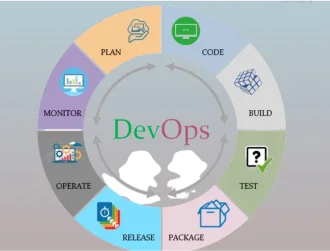The advent of online purchasing has revolutionized consumer behavior in the modern era. In light of the meteoric rise of online shopping, companies are constantly exploring innovative methods to enhance the purchasing experience for their customers. A well-developed e-commerce software that can adjust to clients’ evolving demands requires meticulous planning, precise specification drafting, and innovative problem-solving.
This article aims to assist e-commerce app developers by covering all the necessary aspects of writing specs. When businesses understand what customers want from ecommerce mobile app development, they can better communicate those requirements to developers, who then develop simple and straightforward applications.
1. Understanding the scope
It is difficult to get into the specifics of the specification writing until the scope of the e-commerce application has been established. Finding out your target audience is the first order of business.
After that, you may specify your product categories, go into detail about its features and functions, latest ecommerce technology trends, and choose between web, iOS, Android, or a hybrid platform.
-
Target audience
Knowing the demographics, interests, and routines of the target audience is key to ecommerce mobile app development. Doing market research to learn crucial demographics like age, gender, location, income level, and interests is essential for this. Understanding consumer purchase habits, preferred devices, and app issues may help businesses better serve their clients.
In order to appeal to tech-savvy millennials, the app’s design, social sharing features, and mobile optimization may all be kept simple. On the other side, we may try to meet the needs of the elderly by drawing attention to the fact that they want larger fonts, simpler navigation, and faster checkout processes.
-
Product classifications
Defining the extent of product categories is vital for effectively organizing the e-commerce software’s catalog. As part of this procedure, items are sorted into reasonable categories, including clothing, gadgets, home decor, cosmetics, and many more. Subdividing each category will make it simpler for users to navigate and explore.
In addition, businesses need to plan how to arrange their product inventory within the app. Among the things included are listing, description, image, pricing, inventory management, and SKU variation characteristics. If the app offers flash sales, special discounts, or dynamic pricing, include it in the scope as well.
-
Potential benefits and strengths
List all the features and functions the e-commerce app must have. Some examples of such features include the ability to filter and search products, secure payment methods, order tracking, personalized recommendations, social sharing, and customer support.
2. User experience design
User experience (UX) is a key component of a successful ecommerce mobile app development. A well-designed user experience increases engagement, improved usability, and brand loyalty. As you draft the requirements for the user experience, keep the following in mind:
-
Uncomplicated navigational aid
Verify if the app’s UI is intuitive and easy to use. Assist customers in finding what they’re looking for using clear and concise search options, filters, and categories.
-
Effortless and rapid purchasing process
Simplifying the checkout process may decrease cart abandonment and annoyance. Features like saved payment methods, guest checkout, and one-click ordering may streamline the purchasing process and help in ecommerce app development.
-
Theme for mobile users
You need to fine-tune the app’s performance to be compatible with all devices. A responsive design ensures that the user experience remains consistent across all devices.
3. Technical specifications
Every successful e-commerce platform has a strong technical basis. When developing technical standards, bear the following in mind:
-
Software and hardware configuration
Provide an overview of the technology stack that will be used to develop the e-commerce app. This stack should contain:
a. Use frontend frameworks such as React.js, Angular, or Vue.js to create interactive user interfaces (UIs) that provide a fluid browsing experience.
b. Choose backend technologies like Node.js, Django, Ruby on Rails, or Laravel to handle server-side logic, interfaces with databases, and the execution of business logic.
c. Evaluate your requirements to choose the best database technology. Relational databases, such as MySQL or PostgreSQL, are great options for orderly data storage. The flexibility and scalability of NoSQL databases, such as MongoDB, are your best bets.
d. JavaScript is used for front-end development, while back-end programming makes use of Python, Ruby, PHP, or Java. Querying and manipulating databases are done using SQL.
-
Standard operating procedures for safety
Take robust security precautions to safeguard sensitive user data, financial information, and transactions during mobile app development for ecommerce. Some of the things that could be necessary are encryption methods, secure authentication systems, and conformity with industry standards such as PCI DSS.
-
Enhancement for maximum productivity and growth
To handle an ever-increasing number of users and data volumes, the e-commerce app’s architecture should emphasize speed and scalability. One crucial aspect of developing an application with horizontal scalability in mind is to use load balancing and auto-scaling algorithms to distribute traffic equally and handle escalating demand. This entails distributing the software over several servers or instances in the cloud.
Integrating with CDNs allows ecommerce app development company to cache and distribute static files from edge servers that are closer to users, which may increase page load times and minimize latency.
4. Testing and quality assurance
To ensure that the e-commerce software performs admirably in all scenarios, it must undergo extensive testing and quality assurance. The following should be considered when drafting testing requirements:
-
Functional testing
The purpose of functional testing is to guarantee that the e-commerce software performs as expected and meets all of its functional requirements. It is important to do user interface testing to ensure that the navigation, buttons, forms, menus, and other UI components function correctly across different devices and screen sizes.
Make sure the software functions as expected in every way. Everything from managing your cart and purchases to checking out and maintaining your user profiles falls under this category.
Test the points of contact with third-party services to ensure that data transfer and operation are uninterrupted. Logistics providers, payment processors, and inventory management software all fall under this category.
-
Performance testing
During performance testing, the application’s responsiveness, scalability, and reliability are examined under different load conditions. By creating an environment that mimics real-world user traffic, this testing may assess an application’s robustness and performance both under light and heavy loads. This is useful for finding limits on resources and performance issues when you build an ecommerce app.
By subjecting a system to extreme conditions, such as sudden spikes in traffic or a high volume of concurrent transactions, stress testing may reveal how well it copes with these kinds of demands.
Measure the app’s horizontal and vertical scalability to see whether it can manage additional users and data. This will help you deploy resources more wisely.
-
Security testing
The primary objective of security testing for an online shop is to identify and repair software vulnerabilities. Automate scans and human inspections to find SQL injection, cross-site scripting (XSS), and weak authentication approaches, among other common security issues.
To identify security issues, penetration testers simulate actual cyber threats and execute controlled attacks on the software. In order to avoid data breaches and unauthorized access, it is crucial to test data encryption. This involves ensuring protocols such as SSL/TLS are in place to encrypt crucial information before it is sent or stored.
It is your responsibility to ensure that your system follows all regulations and security guidelines. The General Data Protection Regulation (GDPR) and the Payment Card Industry Data Security Standard (PCI DSS) are examples of such regulations.
-
Usability testing
The goal of usability testing is to enhance the program and make users happy by analyzing the ecommerce app design, navigation, and overall user experience. Collect feedback from real users using surveys, usability tests, and interviews to assess the application’s intuitiveness, ease of use, and overall satisfaction.
Get the app tested for keyboard navigation, screen reader compatibility, and WCAG compliance to ensure it’s usable by everyone.
By using A/B testing, mobile app development company may discover which layouts, features, and design variations are better received by customers, resulting in more engagement and conversions.
-
Regression testing
Prior to publishing updated code or adding new features, regression testing is carried out to ensure that no previously implemented functionalities are broken or unanticipated side effects are introduced.
Git and Subversion are crucial for version control because they allow developers to maintain stable and traceable code, monitor changes, and roll back to previous versions as needed.
You can ensure that changes are fully tested before they are sent to production and enable short feedback loops by automating the test and deployment processes using CI/CD pipelines.
Conclusion
A well-designed e-commerce platform requires meticulous planning, well-defined requirements, and an unwavering commitment to technical excellence and the user experience. Having clear goals and expectations may help businesses and developers collaborate more effectively to create a seamless shopping experience that customers appreciate and increase revenue.
By following the guidelines in this guide and hiring the best mobile app development partner for your success, businesses can shape the future of e-commerce by developing innovative, accessible, and customer-centric mobile applications.








